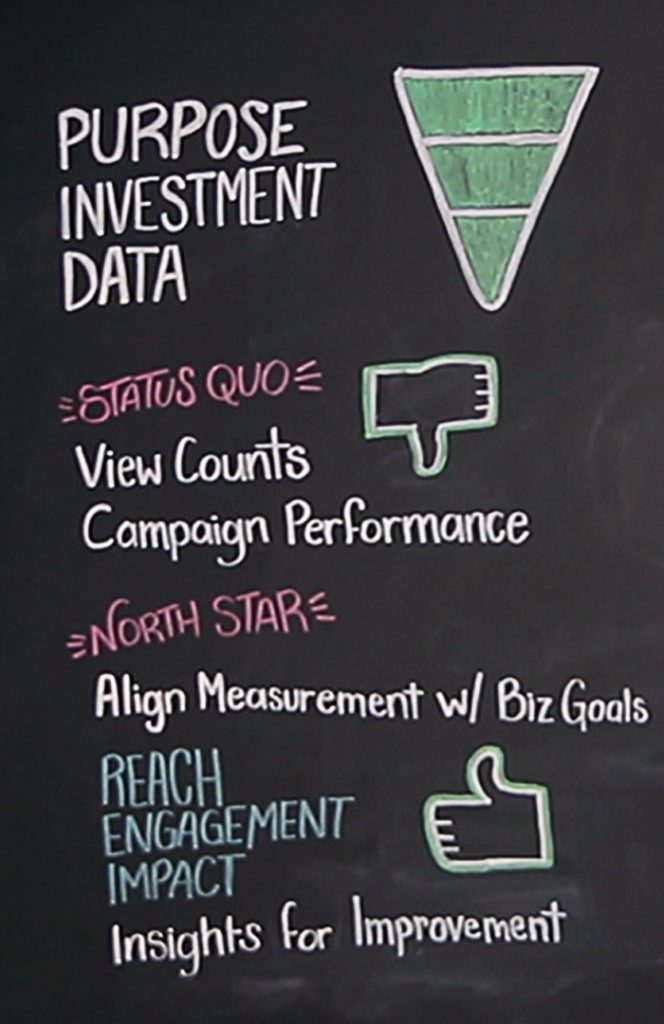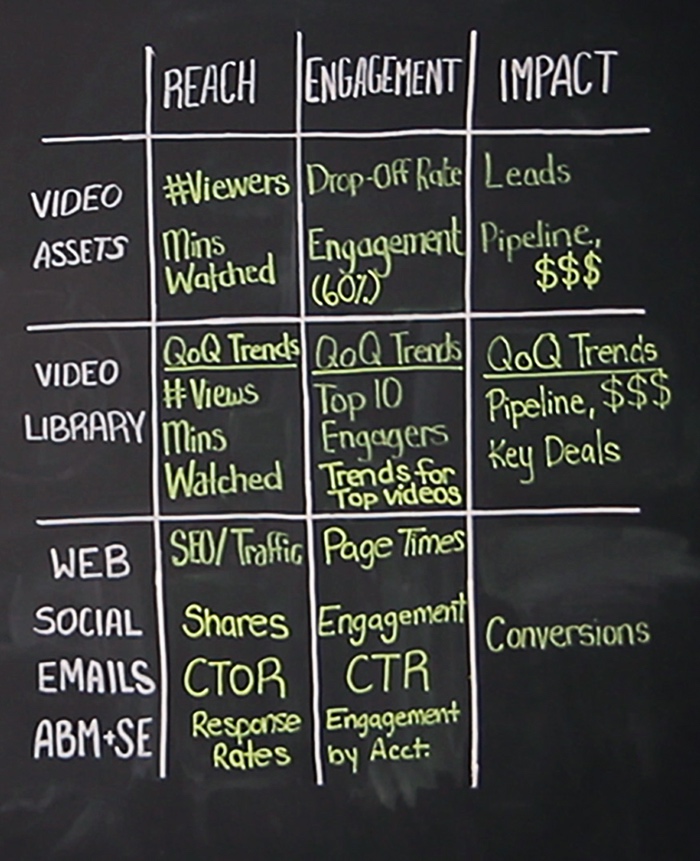We always advocate the power of video to boil complex concepts down into simple, visual terms. Whether it’s a short how-to video or a longer product demo, video is a no-brainer for getting your point across. So why not apply that same methodology to video? Very meta, right?
Well, today we’re trying something new, and we think you’re going to love it! Say hello to the first episode of Chalk Talks – short, but informative deep-dives into video marketing best practices. In episode one, I’ll discuss how you can really measure the effectiveness of your video content, and the data you might be missing out on. Check it out:
Measuring the performance of your online video programs is becoming an increasingly important topic for today’s marketers. My name is Tyler Lessard, and in this Chalk Talk, we’ll explore why that’s become the case, and what the best practices are for moving from view counts to real measures of success for your online video programs.
View Counts Don’t Count
Before I dive into the what, I’d like to start off with the why, and some understanding of what’s changed in the last few years that is forcing us to think differently about what success means with our video content. The first is purpose. Why we’re using video and how we’re using video has dramatically changed in the last three to five years.
Video used to be reserved to top-of-funnel programs, which were really all about driving awareness. But video is now being used all throughout the buyer’s journey to educate, to drive interest, to convince, and to convert audiences into downstream customers. As a result, we need to think differently about what success means for our video content.
The second change is investment. Businesses continue to report increasing investments in online video content, and as a result, there’s increased pressure to justify the returns on those investments. So, you need hard data that tells you not just the number of views but how those videos are impacting your real business goals.
And finally one of the biggest changes to what success means for video is data. We’re living in a data-driven marketing and sales world, and there’s an expectation that you’ll have the insights you need to not only justify your investments but to understand what’s working, what’s not, and how to continuously optimize your results. These three things combined make it a huge imperative to better understand how your video is performing and what insights you can use to generate better results.
It’s all about moving from a status quo of understanding view counts and an overall campaign performance for those campaigns that include video to a much more mature model – a north star, if you will – where you’re now aligning your measurement with your real business goals. And to me, that comes down to three things: how is your video content helping you establish reach? How is it helping you drive engagement with your audience? And how is it helping you deliver real business impact, whether that be leads, pipeline revenue, or other forms of metrics? And finally, what insights can you glean from those performance metrics that help you continuously optimize and keep performing better as it pertains to these metrics?
The Metrics You’re Missing
Now that we’ve talked about the why, I want to talk about the what. How can you put this into practice within your own business? This handy-dandy chart on the right here gives you a bit of a baseline for what kinds of metrics you’ll wanna think about in each of these different areas.
So let’s start at the top here and talk about reach for your individual video assets. For each video in your library, you’re not only going to work at the number of views, but how many number of viewers or unique viewers are you reaching, and how many minutes watched. This will give you a better sense for how long people are actually engaging in that video.
Second is looking at the different engagement metrics to know if that content is really working. What does your drop-off rate look like? Are people dropping off after 10 seconds? What does your overall engagement look like, and how many people are watching all the way to the end of that video? Industry benchmarks say that 60% is what you want to shoot for with the percentage of your viewers that are watching all the way to the end of the video. That means it’s a good performing video. If it’s more like the average, which is more in the 40 to 50 range, then you know that content could likely be improved to deliver better engagement.
And finally, most importantly, is understanding how each video is not only generating views and engagement but how is it generating number of leads, amount of pipeline, and amount of revenue in your business. This is all about the real impact that you’re generally looking for, and when you integrate video viewing data with your marketing and sales systems, you can actually start to do this. You can start to look at how each individual video is attributing to pipeline and is helping to influence the amount of revenue closed by your sales team.
This becomes a very magical thing, where you can start to really see which videos are over or underperforming, and you can start to look at the overall ROI of your investments. You also want to look at benchmarks and metrics for your overall video library. So not just each individual video, but looking at your aggregate investment in video. The same types of areas when it comes to reach – are your overall videos on a quarter over quarter driving an increased number of views? Is that going up and to the right?
Next I want to talk about number of minutes watched. I like this metric again because it’s a blend of views and engagement, and that’s the one you really want to start to see going up and to the right. On a quarter-over-quarter basis, it means your video content is generating more and more reach.
Next up from an engagement perspective is understanding which videos in a given quarter, or a given time period, are your top for audience engagement. You can understand a lot from that, see what your audience is really interested in, and use those insights to fuel better results.
And finally, most importantly, is how your overall video library is contributing to pipeline, revenue, and ultimately, ROI. You’re able to track who’s watching which videos and use that information in your sales systems to report back on influence and attribution. That’s the stuff that gets me really excited!
Are Your Videos Really Driving Results?
The last piece here is something not enough people are thinking about, and it’s taking the video lens off and looking at it from your marketing program’s perspective. How is video ultimately helping drive the results of your web programs?
Look at your website. Look at pages with and without video. Are those with video driving greater traffic? Are they generating better SEO results? Are they driving higher time on page? If so, you know what to do. Next you can look at social and email programs that include video versus those that don’t driving greater click-through rates, greater engagement, or ultimately, higher conversions for those programs. If that’s working, then that’s where you need to focus your video efforts.
And finally, account-based marketing, and sales enablement. Same idea. If you’re targeting specific accounts and using video to do that, is it working, and are you seeing accounts that engage with video progress faster or not? These are some of the things that are going to help you understand what’s working and help you figure out where you can optimize your programs to ultimately deliver a better overall ROI. What it all comes down to is aligning your measurement strategy with your business goals and generating the insights you need to improve your performance every day.
My name’s Tyler Lessard, and this has been a Vidyard Chalk Talk!
The post Chalk Talks: Measuring the Performance of Your Video appeared first on Vidyard.
source http://www.vidyard.com/blog/chalk-talks-measuring-performance-video/



No comments:
Post a Comment